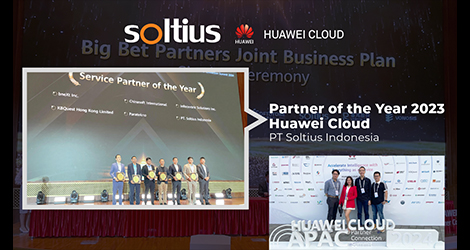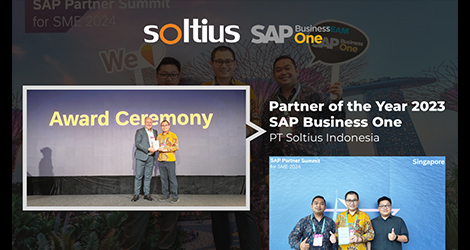The Top 10 HR Best Practices for 2022
 Read away to all about the best HR practices that all the winning organizations in the industry religiously put to use, and you just might find some that will benefit your org just the same!
Read away to all about the best HR practices that all the winning organizations in the industry religiously put to use, and you just might find some that will benefit your org just the same!
The effects of the past few years will still be felt for a while longer. If you want to remain competitive, there are two aspects you need to work on now! Use more innovative strategies and adopt the right technology. This blog outlines the most suitable HR best practices for the current workforce.
Human resources and how they are managed evolves constantly. Over the years, huge efforts have been made to find the best ways to manage human resources to facilitate success.
While some of these best practices have been around for a very long time, tweaking them to suit the need of the time and ensuring that you are prepared to meet the challenges is vital. HR departments have to unlearn a few things and re-evaluate how they will approach the needs of the drastically changing world of HR post the pandemic.
What are HR Best Practices?
HR practices are the foundation for defining and managing strategic HR operations. They provide the skeletal structure or the backbone to manage an organization’s talent. These practices help HR departments and management align HR strategy with the overall business strategy.
HR Practices and HR Activities
Let’s differentiate between HR practices and HR activities.
HR activities refer to the functions of HR and how strategies are implemented and executed. Here are a few examples:
- Payroll
- Surveys
- Recruitment and Hiring
- Onboarding
- Training and Development
- Compensation and Benefits
- Employee and Labor relations
- Retention
- Employee Safety
- Health and Well-being
- Schedule Adherence
Now let’s look at what comes under HR practices:
- Defining the mission and objectives of the HR department
- Strategic planning, organizing, and managing the HR department
- Measuring the results
- Finding ways to improve the work environment
- Developing talent
- Succession Planning
- Keeping employees motivated and engaged
- Regular performance evaluation
Here are the Top 10 HR Best Practices
1. Security
Human resources are all about humans, so it is only natural to care about them. This means your HR practices have to revolve around them.
People rely on jobs for their daily bread, which means that a threat to their revenue sources will cause major concern. Most people already have other worries and concerns. They do not need the added burden of worrying about where the next meal will come from. This is especially the case in recent years.
HR teams need to let their employees know that their jobs are secure, and they aren’t at risk of being laid off because a better machine has been introduced in the market, or they may lose their jobs due to a few mistakes.
A survey done in the UK reveals that 28% of employees rank job security as the third most important thing. If employees don’t find job security, there is a very high chance that they will look for it elsewhere.
Let your employees know you are there for them, and you have their backs. Investing in your employees is a great way of letting them know that you plan to keep them in the organization for a while.
2. Hiring the best fit
Hiring is always a major concern for HR teams. This can sometimes lead to rash decisions to meet requirements, causing companies to end up with human capital that isn’t the right fit. In many cases, companies hire the wrong talent because of poor HR practices.
Yes, it is difficult to find the right talent. Indeed, great talent costs more. However, finding the right talent for your organization is vital.
Remember, ideally, you want to spend your hiring and training budget on people who are more likely to show a return on the investment you make in hiring them.
Going through several resumes and combing through thousands of applications is tedious. But many great tools can help you filter applications and select candidates based on specified criteria.
Invest time and effort to get the right people for your organization, and you will see the rewards. Here are some things you should do to ensure you choose the right fit:
- Work-related assessments
- Skill assessments
- Peer assessments
- Aptitude tests
- Run reference checks
- Conduct structured interviews
While people’s requirements are based on the type of job and organization, these are the characteristics you are looking for in general.
Asking these questions is a good HR practice:
- Ability: Do they have the skills and knowledge to execute the functions of the role they have applied?
- Learning: Are they trainable? Can you teach additional skills to add more value to the role and your organization?
- Commitment: Once you have invested time, money, and energy in them, will they stay?
If you can get positive answers to these three vital questions, you have a solid foundation for decision-making.
3. Compensation
Individuals who take up jobs always have one common attribute. They all seek excellent monetary compensation for their contributions. This is true for your employees as well.
Did you know that most people cannot even determine if they are being paid fairly?
That is where you come in. Deciding employee pay is a vital HR function. An excellent HR practice is to make sure you pay your employees fairly for their contributions to your organization’s goals. So how is fair compensation decided?
Here are a few things to consider when deciding compensation:
- What level of skill is required for this role?
- What is the talent availability level in the market?
- How specialized is the skill your company needs?
- What are the job responsibilities?
- Does the job place the employee in potential danger?
- What is the expected performance level? How are they performing?
- Do they have additional skills that you can leverage?
- How critical is their job function?
- How much do you have to spend on them in addition to their compensation?
- What is the market value for the role?
These questions will give you a structure to determine what can be deemed fair pay for any given role.
It is always good to give your employees a basic compensation package and add on employee benefits. These benefits could be in additional bonuses or non-monetary incentives and benefits.
Make sure you also have a clearly defined performance-based incentive plan. This goes a long way in helping employees stay motivated and increasing productivity.
You may also want to consider additional benefits, such as stock options. Offering employees stock options gives them additional incentive to achieve goals and a reason to stay longer.
4. Training and Development
Investing in your people is another smart HR practice. Investing in your workforce's education, training, and development is one of the best ways to ensure you get the most out of them. It is also key to remaining competitive. The first step is to understand what skills they have. Once you know what their talents are, you can identify the skills that will be beneficial.
An excellent training and development program is now becoming increasingly important. Here is how it helps:
- Increases employee retention: Employees who feel invested also feel more valuable to an organization. They see that the company has made an effort to help them acquire skills and become better at their jobs. This makes them more loyal.
- Increases the skill in the organization: The more you invest in your employees, the more skills they develop. This means there is an increased ability, which makes it easier to train new hires. Employees who feel good at their jobs are generally happier doing their jobs.
- Makes the organization more competitive: Having a more skilled workforce than your competition is the best way to keep your organization ahead in the game. This is why organizations painstakingly offer handsome compensation to attract great talent and continuously invest in developing such talent.
- Increases productivity: This one goes without saying. The more developed or skilled your employees are, the more they contribute. This means their productivity increases and ultimately boosts the company’s bottom line.
- Increased quality: The more practice, training, and skill an individual gets doing one thing, the better they become at it. If you are looking to increase the quality of your products or services, this HR practice cannot be overlooked.
- Reduced micromanagement: Employees who are better placed to execute a function are more capable of executing that function. This means managers do not have to monitor their work continuously. This ensures that they enjoy their jobs and perform better than before.
If you notice an upward trend in the formation and use of HR practices corresponding to the areas listed above, they indicate good use of HR practices to get the most out of your team.
5. Transparency
This is a key part of any organization. Communicating with transparency and honesty is another important HR practice that must be worked at constantly. Employees need to know what is expected of them, and more importantly, how their contributions are helping the organization.
A good example of an HR best practice is to let employees know what is happening with the organization. This gives them insights into how their contributions directly help the company.
Another way to ensure transparency is to ensure that information is readily available to employees. This could involve ensuring they know what they are entitled to receive from an organization or a clear and transparent grievance handling procedure.
6. Employee Benefits
Giving your employees additional benefits is another crucial HR practice. We have talked about this earlier, but let’s look into how employee benefits help an organization.
First, giving your employees more than a paycheck at the end of the month shows them that you care. It shows them you are invested in their well-being. It indicates they are more than just workers and are an important part of the organization.
To understand what kind of benefits you should give your employees, you must understand what motivates them. The best way to do that is to ask them. Find out what kind of benefits they would like to receive from your employees.
Get creative with benefits. Don’t just do what everyone else is doing; give them something extra. This could be something interesting like a fully paid adventure vacation or giving them amazing insurance plans that cover their families.
7. Employee Feedback
This is a vital HR best practice. If you want to know what your employees are thinking, ask them. If you want to let your employees know how they are doing, tell them.
A good feedback system is a vital HR practice. There are different feedback systems you can use. What you choose depends on your work culture and the type of organization you run.
Here are a few examples of feedback systems:
- 360-degree feedback
- Continuous feedback
- Employee performance feedback
- Process feedback survey
8. Communication
Communication is an integral part of HR. Maintaining a clear communication system is another key HR practice. This encompasses how employees reach out to you and how you pass information to them.
Ideally, employees should be able to voice their concerns as they happen, and you should be able to do the same. Clear communication from the bottom to the top and the top to the bottom is vital to an organization’s success.
9. Employee Engagement
Engaged employees can be the difference between a good company and a great company. Making sure that your employees are constantly engaged and inspired is no easy task.
This means that HR teams have to find innovative and intelligent ways of ensuring their employees are engaged.
Here are a few tips to keep your employees engaged:
- Recognize and appreciate their efforts
- Give them a chance to do something that matters
- Allow them to develop
10. Performance Management
Performance management is another HR practice that you need to handle consistently. Measuring and recognizing employee efforts is key in determining what you can expect from them and where the business is going.
This is also the best way to create development plans for your organization. Understand what areas need more work and design a program based on this information. Performance management also helps companies decide how to compensate their employees.
Here are a few performance management methods. Decide which one or which combination works best for your organization.
- MBO
- 360-degree feedback
- Customer reviews
- Assessment center method
- BARS
- Psychological appraisals
HR Best Practices to Implement at your Org
Now that we know the HR best practices let us look at a few examples that you should implement as soon as possible.
- Hire great talent
- Train them to achieve success
- Prioritize employee wellbeing and safety
- Strive to create and maintain open communication channels
- Compensate great talent handsomely
- Monitor and manage employee performance
- Offer great employee benefits
- Show them that you care by rewarding them
Conclusion
To wrap up this list of HR best practices, we can say that HR teams have to focus on the human aspect of their workforce. Treat people as you want to be treated, and the results will surely show. Your employees are the life force of your organization—remember this and let them know they are crucial to your success.
credit : Darwinbox
Other News


